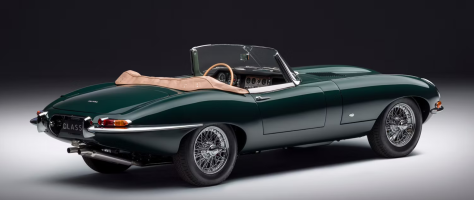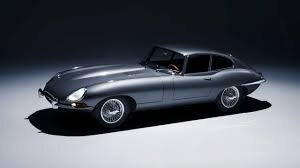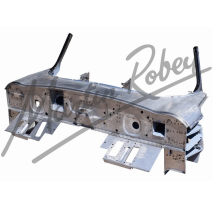The Jaguar E-Type, also known as the Jaguar XK-E in North America, is a legendary sports car produced by Jaguar Cars from 1961 to 1974. The E-Type is often regarded as one of the most beautiful and impressive automotive designs of all time, with Enzo Ferrari even calling it "the most beautiful car in the world."
Series 1 (1961-1968)
The first series of the E-Type, produced from 1961 to 1968, marked the beginning of a new era in the automotive world. The E-Type Series 1 was initially introduced with a 3.8-liter six-cylinder engine, which was later expanded to 4.2 liters. The car featured a revolutionary monocoque construction and disc brakes that were developed on racetracks at the time. The Series 1 was distinguished by its closed headlights, a signature feature of these early models, and its simple, elegant interior. Both the Roadster and Coupé versions were highly appreciated by enthusiasts.
Series 1.5 (1967-1968)
The Series 1.5 is a transitional series introduced in 1967. These models combined many elements of the Series 1 with innovations that were fully implemented in the Series 2. Notable changes include the introduction of open headlights, modified interior switches, and improvements in emission controls, which were especially necessary for the US market.
Series 2 (1968-1971)
The Series 2, produced from 1968 to 1971, brought further technical and visual changes. The Jaguar E-Type Series 2 received larger bumpers to comply with stricter safety regulations, and the characteristic open headlights became standard. The cooling system was improved, and the cars were equipped with larger front and rear indicators integrated into the bumpers. The 4.2-liter engine was retained, but the car received a larger air intake and improved brakes to enhance performance and safety.
Series 3 (1971-1974)
The Series 3, produced from 1971 to 1974, brought perhaps the most significant change in the E-Type range. The most important innovation was the introduction of a 5.3-liter V12 engine, which gave the vehicle extraordinary performance. This engine made the E-Type Series 3 a true Grand Tourer, excelling in both performance and driving comfort. The Series 3 also had a longer wheelbase, which made the interior more comfortable. Visually, the Series 3 was distinguished by a larger, oval-shaped grille opening and wide chrome bumpers that met the new safety standards. The Roadster version was available exclusively with the V12 engine, while the Coupé was built as a 2+2 model.
The Jaguar E-Type is not just a milestone in automotive history but also a symbol of the 1960s. Its blend of performance, design, and affordability made it one of the most sought-after vehicles of its time. Today, the E-Type is considered a highly desirable classic, cherished by collectors and enthusiasts worldwide. Its iconic design and technical innovations continue to influence modern sports cars, keeping the E-Type's legacy alive in the automotive world.












